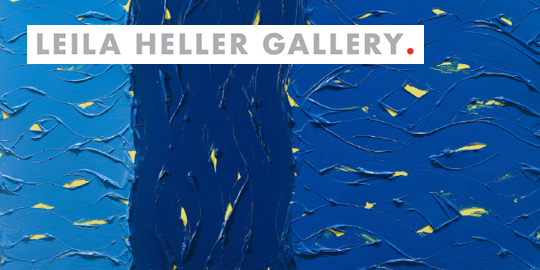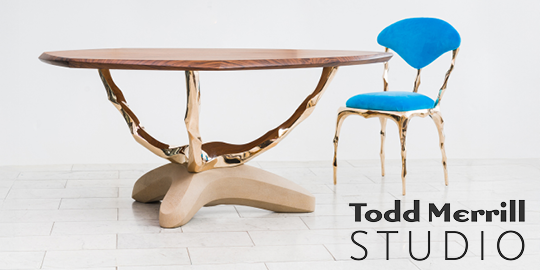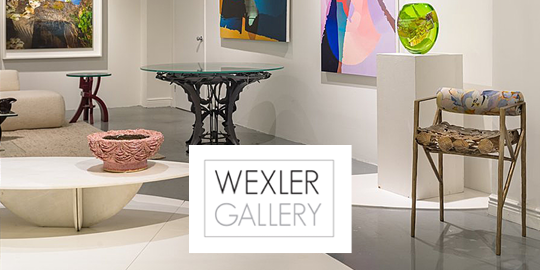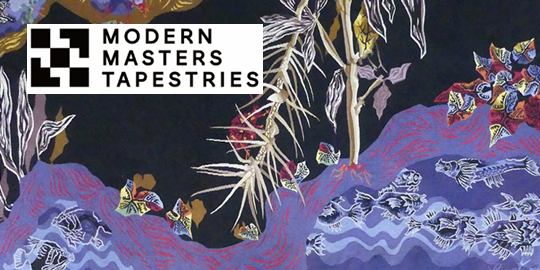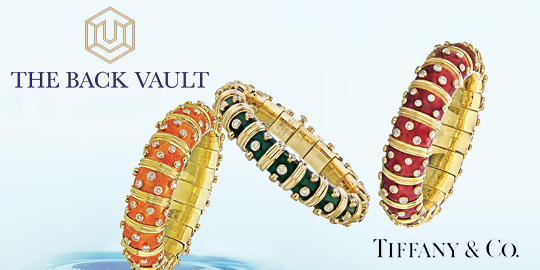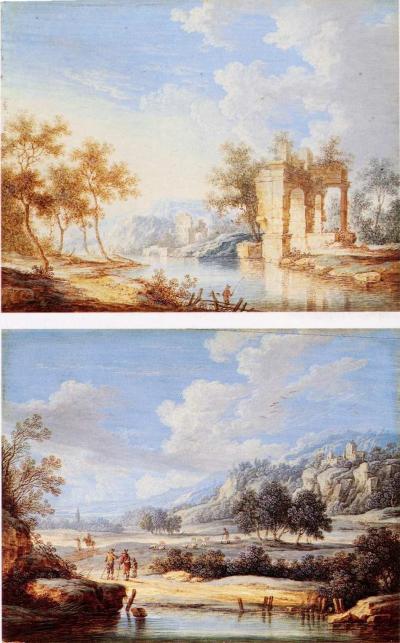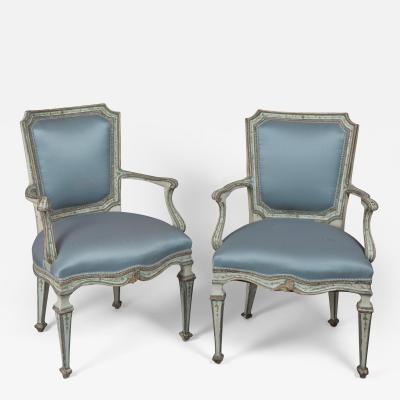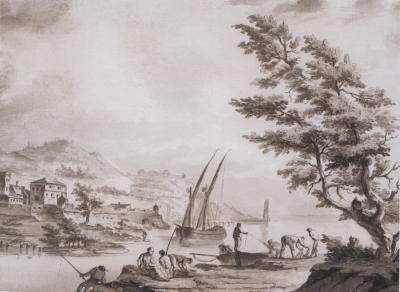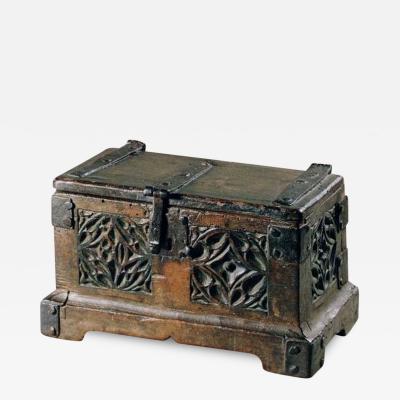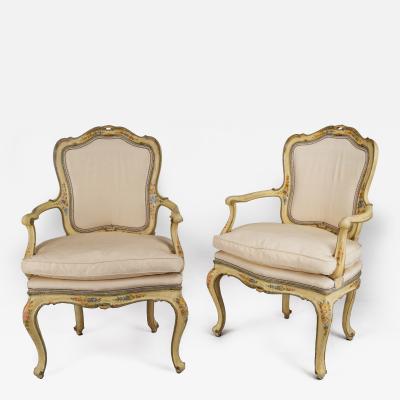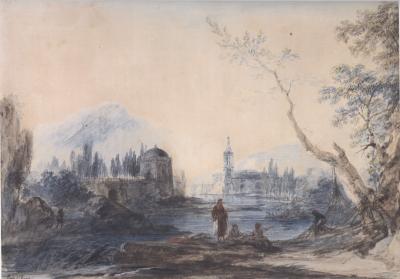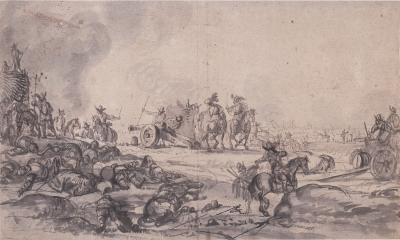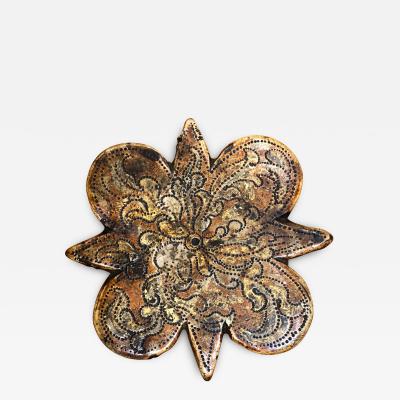Triumphant Females with Putti
-
Description
Pittoni, with Tiepolo and Piazzetta, was one of the most important draughtsman and painters of the Venetian Rococo. He favored classical subjects, as well as illustrating mythological literature. Pittoni painted many Venetian and Veneto church altarpieces; however, it was his secular paintings for which he was famed.
In Alice Binion’s catalogue of drawings (1983) there are 304 fragments and sheets, but his output was known to be greater than that which has survived.
Pittoni studied first with his uncle Francesco(c. 1654–1728) who painted in a heartier style than that of his nephew, which he later adopted after supplying works for the Dresden Palace of Frederick, Augustus I, Elector of Saxony (who became King Augustus II of Poland).
Pittoni developed a very personal style with an affinity to the French Rococo. His drawings are closer in technique to Antoine Coypel, Francois LeMoyne and Jean Restout, than to his Venetian contemporaries. It is thought that he may have traveled to Paris in 1720 with Rosalba Carriera, Pellegrini and Zanetti.
His subjects often were placed in vague outdoor settings with suggestively veiled females or nudes. He or his patrons seem to have been taken with the subject of young heroines about to be sacrificed; his rendition of drapery was celebrated, and his multi-peopled compositions skillfully arranged.
Pittoni was especially renowned beyond the Veneto, in Dresden, Cologne, Bohemia, Poland, and Spain. The bishop Clemens August, Elector of Cologne was his patron, as was Empress Amalia Wilhelmina of Austria (c. 1734-5). Philip V of Spain, through Filippo Juvarra, invited him to depict the life of Alexander the Great (in La Granja). Francesco Algarotti, as agent for Frederick – Augustus II, chose Pittoni to take part in his planned collection of contemporary paintings.
Pittoni used his drawings, almost always in red chalk as preparatory studies for paintings or to record a finished work. Elaborate and careful drawings preceded each painting where he added elements to an initial motif or assembled the composition from details. The majority of his surviving drawings dating from 1720-35 were once owned by the Salvotti family.
Anton Kern worked in Pittoni’s studio as his assistant from 1725-38, recording many of his works, which may represent those lost. (See Correr Museum, Venice 784-7). Pittoni was also a consultant on art and a skillful restorer and was elected to important professional offices. He was also a founder of the Venetian Accademia, and became president after Tiepolo’s term.
This highly finished drawing was probably made in preparation or recording for a now missing work. The outstretched arms, the foreshortening and the movement of the floating female figures and the putti in the clouds, all placed within a rotary composition is evidently a typically Pittoni preoccupation. The elegance, the theatrical aspect, and the gesturing are also typical of his work. (Similar aesthetic qualities can be seen in his Justice and Peace at Palazzo Pesaro in Venice). The lower female figure compares to the drawing at the Fondazione Cini # 200 no 30.207 and one of the putti is similar to the putto in Venere & Enea in the Accademia in Venice. - More Information
-
Dimensions
W. 9.38 in; H. 13.13 in; W. 23.83 cm; H. 33.35 cm;
Message from Seller:
L' Antiquaire & The Connoisseur, Inc. specializes in European works of art, antiques, and paintings, with a rich history dating back to 1935. For more information, contact us at 212.517.9176 or info@lantiquaire.us.


